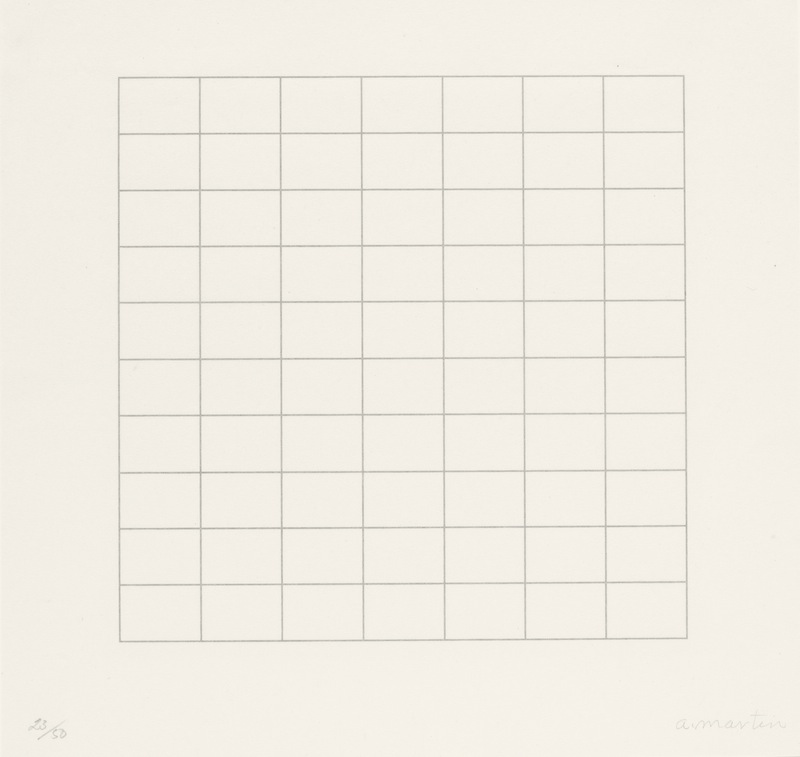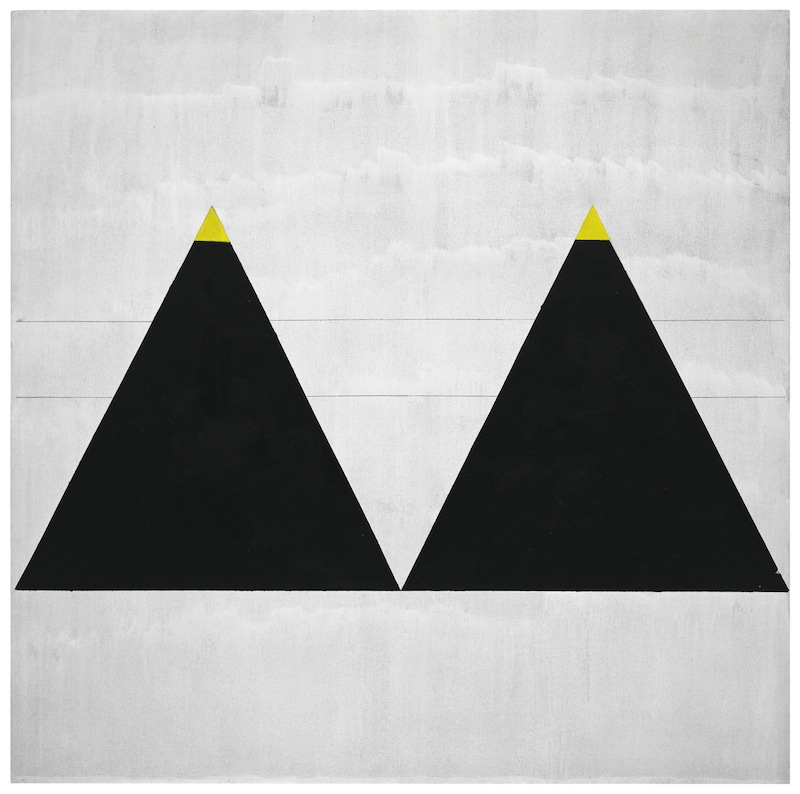From the September issue of Apollo: preview and subscribe here
Midway through the first Agnes Martin retrospective in 21 years, a fragment of writing appears on the wall, prefacing the sparkling geometric modulations of her 1973 screenprint cycle On a Clear Day. ‘These prints,’ wrote Martin back then, ‘express innocence of mind. If you can go with them and hold your mind as empty and tranquil as they are and recognise your feelings at the same time, you will realize your full response to this work.’
Soon after, the viewer arrives at The Islands (1979), 12 luminous canvases in boundless shades of white and faintest blue, variably divided into rising or falling bands, their limpidity and certitude recalling Martin’s beloved Bach. Go with them, squashing analytic thoughts, and they deliver a synthesis of emptiness and fullness. In the silvery flutter of graphite demarcations and the huge, if hugely restrained, colour spectrum, gradations become monumental. Many other artists have deployed slow-release recalibration. But Martin – through titling, tonality, and architectonics – takes you someplace else, where reception persists while binary discriminations don’t so much. Once panic subsides (wait, aren’t I supposed to think, and judge, in front of a modern artwork?), pleasure tinctured with relief sets in, only anti-intellectual if you believe intelligence to be the conscious mind’s preserve.
Martin, a long-term meditator with a patchwork belief system, would hold that it isn’t. She also decided that happiness is the most important, if evanescent, thing; that we’re all receiving haphazard hints of bliss in our daily lives and that art ought to be a concentrated repository for them. This retrospective shows how she got there, which famously was not easy. The early rooms, starting in the mid 1950s, see her working through foggy biomorphic abstraction and hostile sculptures before the grids filter in. Martin said she discovered the grid in the early ’60s while contemplating the idea of trees – arriving emotively at the equivalence Mondrian had arrived at through looking – but the format is already in her paintings by the late 1950s. The grids she made until 1967 are optical and philosophical. In the gleaming white expanse of vertical lozenges, Morning (1965), structure and ground interpenetrate. You can’t say if the grid is on the ground or embedded in it, creating subdivisions; the painting has few aspects but they’re intimately interconnected. (Zen, again.)
In 1967, several conditions – the death of her friend Ad Reinhardt, the loss of her Manhattan studio to developers, the end of a relationship, receiving a grant – compelled her to leave Manhattan and, eventually, settle for reclusion in New Mexico. (Martin was also schizophrenic, hearing voices and falling into trances, and had been hospitalised and given shock therapy in the notorious Bellevue.) She didn’t paint for several years. When she began again, the washed-out pastel blues and ochres and (mostly) horizontals she adopted advocate desert-glare, sky and adobe; but Martin always claimed to be a non-representational painter and her paintings aren’t sustaining as location-specific abstractions. Such thoughts fade pretty quickly, in front of, say, Untitled #3 (1974), which fills six quadrants in watery blue and pink, and essays an improbable fusion of weightlessness and monumentality.
A 100-work retrospective, with anterooms of drawings and a good deal of bustle, isn’t necessarily the best way to appreciate Martin’s gifts. Much here requires fortitude, and while some rooms stop you in your tracks – like the one devoted to The Islands – others you glide through on first visit. The grey paintings from the mid 1980s to early ’90s, for instance, which turn out to be just as uplift-infused as any in Martin’s graceful oeuvre. ‘Uplift’ is a slightly queasy word to include in one’s critical arsenal, and such qualities – alongside an animus towards ‘thinking’ – can make Martin’s gentle persuasions register as avant-garde, even now, while art continues to incline towards the darker emotions. Martin never went that way, at least in her art, which, with its endless horizontal bands, one might interpret as so many sticking plasters over psychic wounds. (An interpretation she would have hated.)
In the final room, the curators let loose a little, relating Martin’s playful late phase to her 1950s’ works, and there is indeed continuity in the use of coloured bands and pyramidal forms: compare, with apologies to Martin for analogy, the snow-capped peak in the drawing Untitled (1961) and the gold-topped black mountains in Untitled #1 (2003). The backward glance is not a modernist stance, but the artist who in Mary Lance’s 2002 documentary With My Back to the World speaks of waiting for her paintings to appear, in miniature, in her mind’s eye, was, you suspect, only modernist by coincidence. Agnes Martin painted the things, or non-things, that she was wired to paint; the results, which entreat us to pause and breathe and accept them, feel ever weirder, ever more essential.


